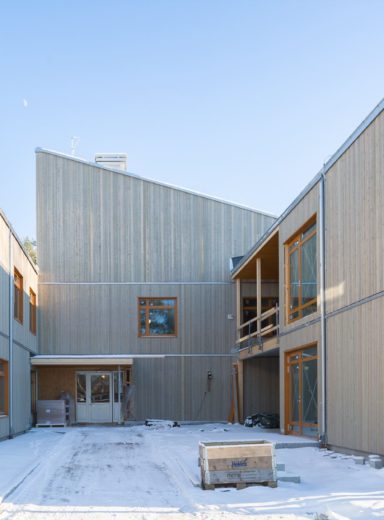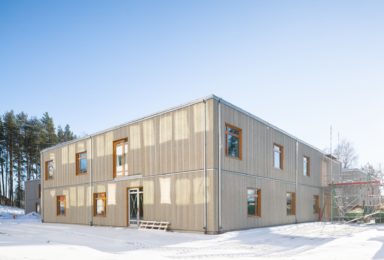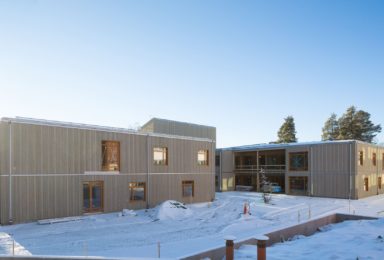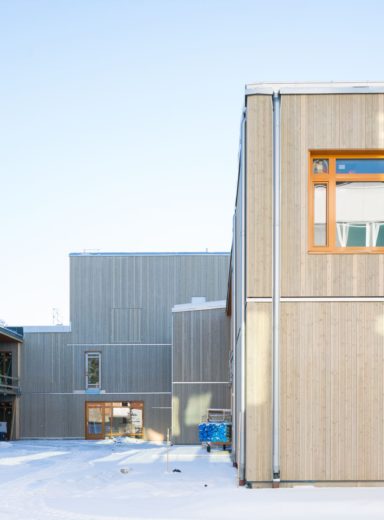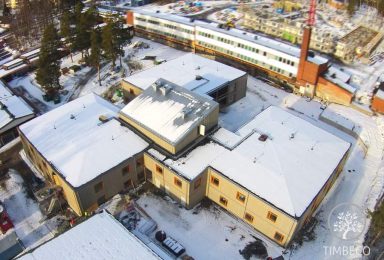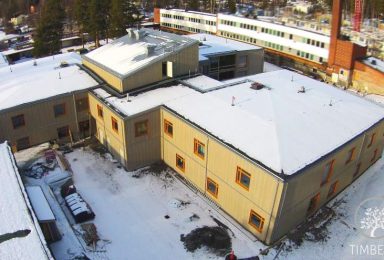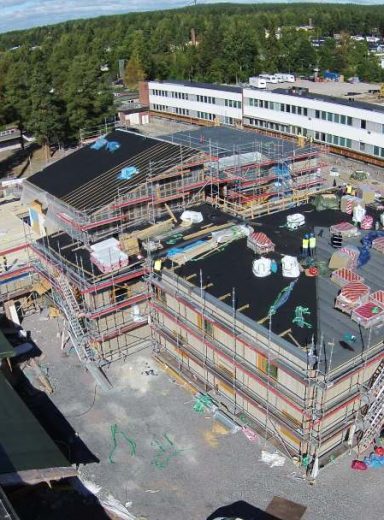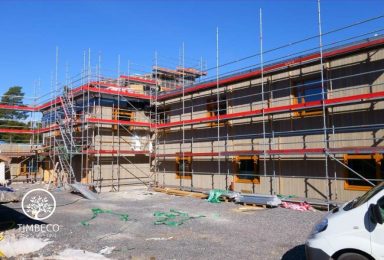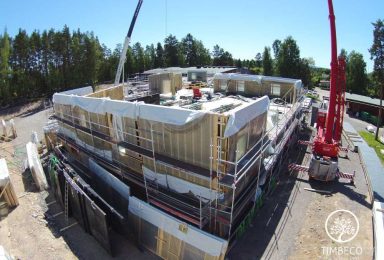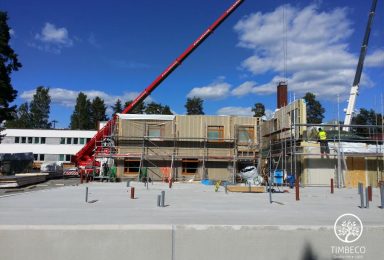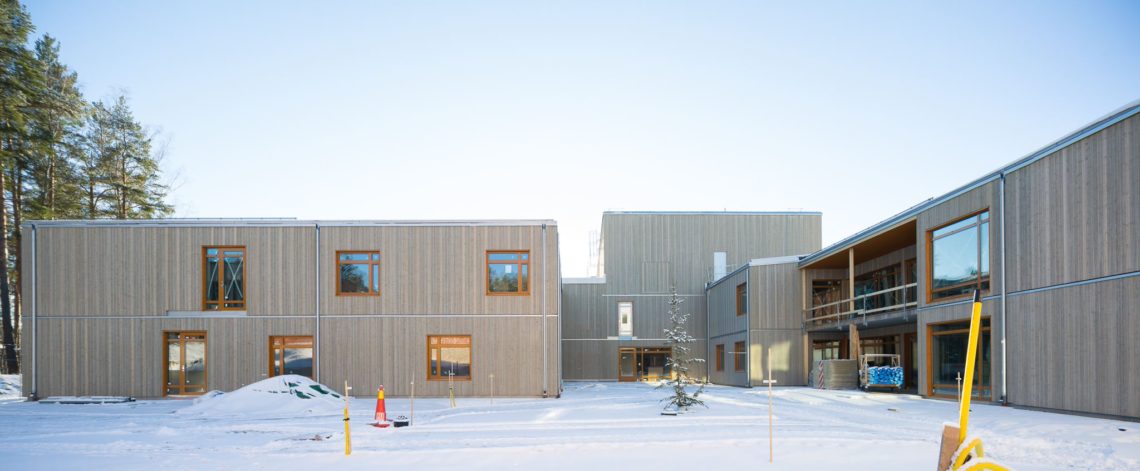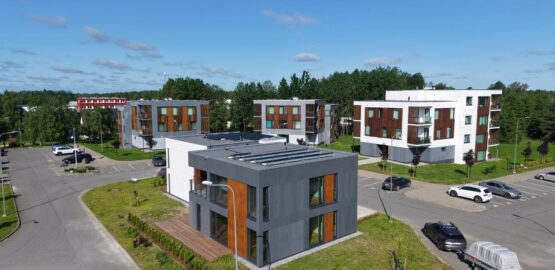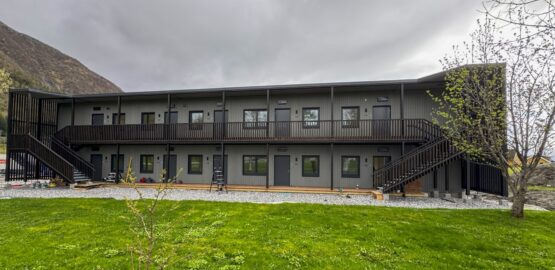Falun CLT nursing home in Sweden
Timbeco delivered a retirement home in Sweden, constructed of a combination of CLT (cross-laminated timber) and prefab timber frame elements.
Designing of a CLT building
The greatest difference between designing a CLT building compared to designing a prefab timber frame element building was the need to take into consideration the manufacturing capacity of the CLT manufacturer. The surface finishing options, possible dimensions and number of layers of CLT elements are largely dependent on the CLT manufacturer. Based on this, Timbeco’s designers performed their strength calculations and designed the junctions. Unlike in the case of timber frames, designing junctions for CLT elements requires special solutions and fixings that had to be dimensioned separately.
Soundproofing for CLT buildings
To block noise from impacts, based on the loads, a special 25 mm layer of Sylomer sound insulation was designed and dimensioned between the CLT ceiling panels and CLT wall panels. Sylomer is a special material for dampening impact noise and vibration.
CLT ceiling elements
CLT ceiling elements were equipped with vent pipes in the factory. Laminated timber beams on long lintels were installed under the CLT ceiling elements.
CLT wall elements
Openings for windows, doors and vent pipes were cut into the CLT wall elements in the factory. Since one side of the CLT wall elements remained visible, the quality of the visible side had to meet high standards even after the CLT boards were packed, transported and mounted. Using CLT elements for the lift shaft can also be highlighted as an interesting solution. Usually, lift shafts are made of concrete to ensure fire resistance. In this project, however, fire resistance was achieved by using CLT boards.
The roof elements were manufactured from timber frames, insulated and made watertight in the factory of Timbeco. Bituminized roofing (SBS) was installed in the prefab element factory.
In the sense of construction technology, the building could have been constructed with any modern and common materials and construction techniques. However, in selecting the material for the building to be constructed, the client followed two principles: environmental sustainability and innovation. In terms of innovation, the client sought to realize the project using innovative building materials. CLT meets both of these criteria. It is an innovative and environmentally sustainable material.
